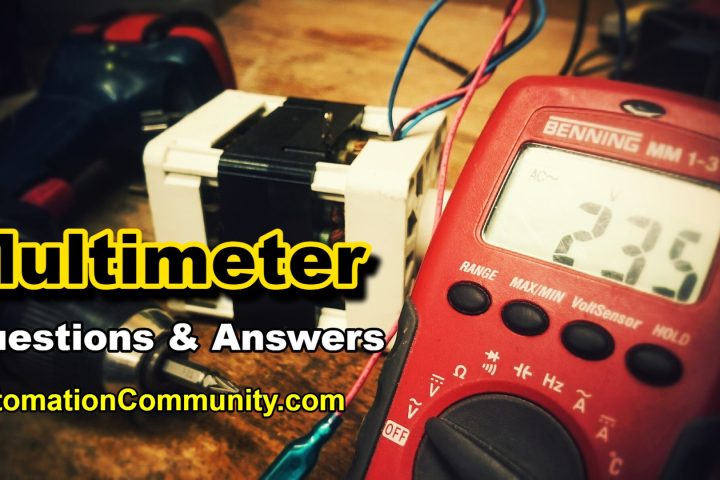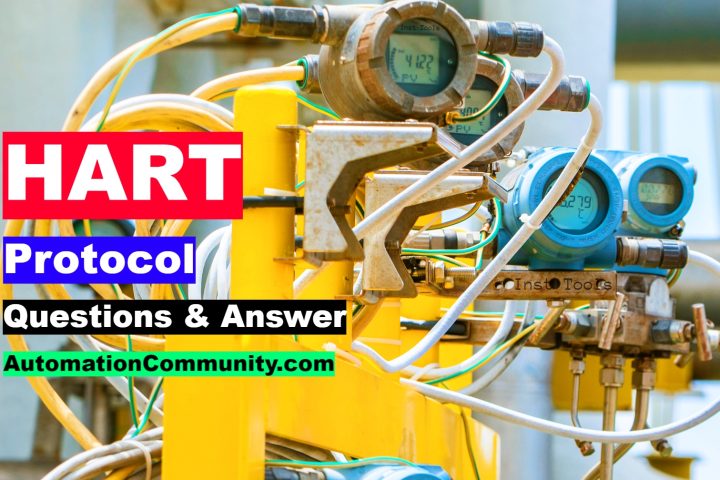Level Measurement Multiple-Choice Questions and Answers
Welcome to our Level Measurement Multiple-Choice Questions and Answers page. If you are an instrumentation engineer, student, or professional looking to test your knowledge of level measurement, this article is for you.
Level Measurement Multiple-Choice Questions

We prepared a list of unique level measurement multiple-choice questions with options, answers, and short explanations for instrument engineers. These questions cover a wide range of topics such as level measurement principles, different types of level transmitters, calibration, troubleshooting, and more. Whether you are preparing for an exam or simply want to refresh your knowledge, our MCQ is a great resource.
What is the definition of “level” in the context of industrial measurement?
a) The height of a tank or vessel
b) The amount of fluid in a tank or vessel
c) The pressure inside a tank or vessel
d) The temperature of a tank or vessel
Answer: b
Explanation: Level is a measure of how much fluid is in a tank or vessel, usually expressed in units of length such as inches, centimeters, or meters.
Which of the following is not a type of level transmitter?
A) Differential Pressure Transmitter
B) Ultrasonic Transmitter
C) Float and Tape Transmitter
D) Infrared Transmitter
Answer: D
Explanation: Infrared transmitter is not a type of level transmitter, but rather a type of temperature sensor.
What is the principle of operation for ultrasonic-level transmitters?
A) Conductivity
B) Capacitance
C) Radar
D) Sound waves
Answer: D
Explanation: Ultrasonic level transmitters work on the principle of measuring the time it takes for an ultrasonic sound wave to travel from the sensor to the liquid and back.
What is the principle of operation for GWR level transmitters?
A) Conductivity
B) Capacitance
C) Radar
D) Sound waves
Answer: C
Explanation: Guided wave radar level transmitters use radar technology to measure the level of liquid in a tank or vessel.
What is the principle of operation for float and tape level transmitters?
A) Conductivity
B) Capacitance
C) Buoyancy
D) Pressure
Answer: C
Explanation: Float and tape level transmitters work on the principle of buoyancy, where the position of a float changes depending on the level of liquid in the tank.
What is the most common cause of inaccurate level measurement readings?
a) Incorrect calibration of the level transmitter
b) Interference from nearby electrical equipment
c) Physical obstructions in the tank or vessel
d) All of the above
Answer: d
Explanation: Inaccurate level measurement readings can be caused by a variety of factors, including incorrect calibration of the level transmitter, interference from nearby electrical equipment, and physical obstructions in the tank or vessel. Instrumentation engineers must identify and address these issues to ensure accurate level measurement readings.
Which type of level transmitter is not affected by foam or turbulence in the liquid?
A) Ultrasonic
B) Capacitance
C) Guided Wave Radar
D) Differential Pressure
Answer: C
Explanation: Guided wave radar level transmitters are not affected by foam or turbulence in the liquid, as the signal is guided by a probe.
What is the principle of operation for differential pressure level transmitters?
A) Conductivity
B) Capacitance
C) Buoyancy
D) Pressure
Answer: D
Explanation: Differential pressure level transmitters work on the principle of measuring the pressure difference between two points in the tank.
Which type of level transmitter is best suited for use in narrow tanks or vessels?
A) Ultrasonic
B) Non-Guided Wave Radar
C) Capacitance
D) Float and Tape
Answer: D
Explanation: Float and tape level transmitters are ideal for use in narrow tanks or vessels where other types of level transmitters may not fit.
Which of the following is an advantage of using a guided wave radar level transmitter?
A. It can measure the level of liquids and solids
B. It is not affected by dust or foam
C. It has high accuracy
D. All of the above
Answer: D
Explanation: Guided wave radar level transmitters are versatile and can measure the level of both liquids and solids. They are also not affected by dust or foam and have high accuracy.
Which type of level transmitter uses a pressure sensor to measure the level of a liquid?
A. Ultrasonic Level Transmitter
B. Radar Level Transmitter
C. Capacitance Level Transmitter
D. Differential Pressure Level Transmitter
Answer: D
Explanation: Differential pressure level transmitters use a pressure sensor to measure the level of a liquid by measuring the pressure difference between the liquid and the reference pressure.
What is the operating principle of a level transmitter?
a) Resistance measurement
b) Ultrasonic measurement
c) Magnetic measurement
d) All of the above
Answer: D
Explanation: A level transmitter can operate on different principles such as resistance measurement, ultrasonic measurement, and magnetic measurement.
Which of the following factors affect the accuracy of a level transmitter?
a) Temperature
b) Density
c) Viscosity
d) All of the above
Answer: d
Explanation: The accuracy of a level transmitter is affected by various factors such as temperature, density, and viscosity.
What is the most common problem associated with using a float-level transmitter in industrial applications?
a. High cost
b. Difficult installation
c. Corrosion of the float
d. Interference from other equipment
Answer: c. Corrosion of the float
Explanation: The most common problem with float-level transmitters is the corrosion of the float, which can affect the accuracy of the measurement.
What is the most common problem associated with using a nuclear-level transmitter in industrial applications?
a. Radiation leakage
b. High cost
c. Difficulty in installation
d. Regulatory compliance issues
Answer: d.
Explanation: The use of nuclear-level transmitters requires compliance with strict regulatory requirements and can be subject to additional costs and bureaucratic hurdles.
What is the main advantage of non-contact level measurement technologies such as ultrasonic and radar?
a) They are less expensive than contact technologies
b) They are more accurate than contact technologies
c) They can be used with any type of fluid
d) They do not require direct contact with the fluid
Answer: d
Explanation: Non-contact level measurement technologies such as ultrasonic and radar do not require direct contact with the fluid, which can be advantageous in certain applications where direct contact is not possible or desirable.
What is the most common problem associated with the level measurement using a float-based sensor?
a) The float can get stuck or damaged
b) The sensor can corrode or wear out
c) The sensor can be affected by changes in temperature or pressure
d) The sensor is not accurate enough for precise measurements
Answer: a
Explanation: Float-based sensors are susceptible to problems such as the float getting stuck or damaged, which can cause inaccurate or unreliable measurements.
Which of the following is not a commonly used technology for level measurement?
a) Ultrasonic
b) Pressure
c) Thermocouple
d) Radar
Answer: c
Explanation: Thermocouples are commonly used for temperature measurement, not for level measurement.
What is the principle of operation for a radar-level transmitter?
a) Buoyancy
b) Ultrasonic
c) Pressure
d) Electromagnetic waves
Answer: d
Explanation: A radar level transmitter operates based on the principle of electromagnetic waves. The transmitter sends out a radar signal that is reflected back by the liquid surface, and the time taken for the signal to return is used to determine the level.
Which type of level transmitter is most suitable for detecting the level of powders and granular solids?
a) Capacitance
b) Guided wave radar
c) Vibrating fork
d) Ultrasonic
Answer: c
Explanation: Vibrating fork level transmitters are most suitable for measuring the level of powders and granular solids because they are not affected by the material’s angle of repose.
Which of the following is a common problem with level measurement in tanks?
a) Uneven tank walls
b) Condensation on the sensor
c) Varying density of the liquid
d) All of the above
Answer: d
Explanation: Uneven tank walls, condensation on the sensor, and varying density of the liquid are all common problems with level measurement in tanks.
How can an instrumentation engineer prevent foam from affecting level measurement readings in a tank or vessel?
a) Use a specialized foam-resistant level transmitter
b) Install an air purging system to remove foam from the tank or vessel
c) Adjust the level transmitter’s sensitivity to account for the foam
d) All of the above
Answer: d
Explanation: Foam can affect level measurement readings by causing the level transmitter to incorrectly detect a higher level than is actually present in the tank or vessel. To prevent this, an instrumentation engineer can use a specialized foam-resistant level transmitter, install an air purging system to remove foam from the tank or vessel and adjust the level transmitter’s sensitivity to account for foam.
What is the purpose of a stilling well in level measurement?
a) To reduce the effects of turbulence on the level transmitter
b) To prevent fluid from entering the level transmitter
c) To provide a stable reference point for the level measurement
d) All of the above
Answer: d
Explanation: A stilling well is a device that is used to provide a stable reference point for level measurement, prevent fluid from entering the level transmitter, and reduce the effects of turbulence on the level transmitter. Instrumentation engineers may use stilling wells in applications where the fluid being measured is highly turbulent or where the level measurement needs to be highly accurate.
Read Next:














